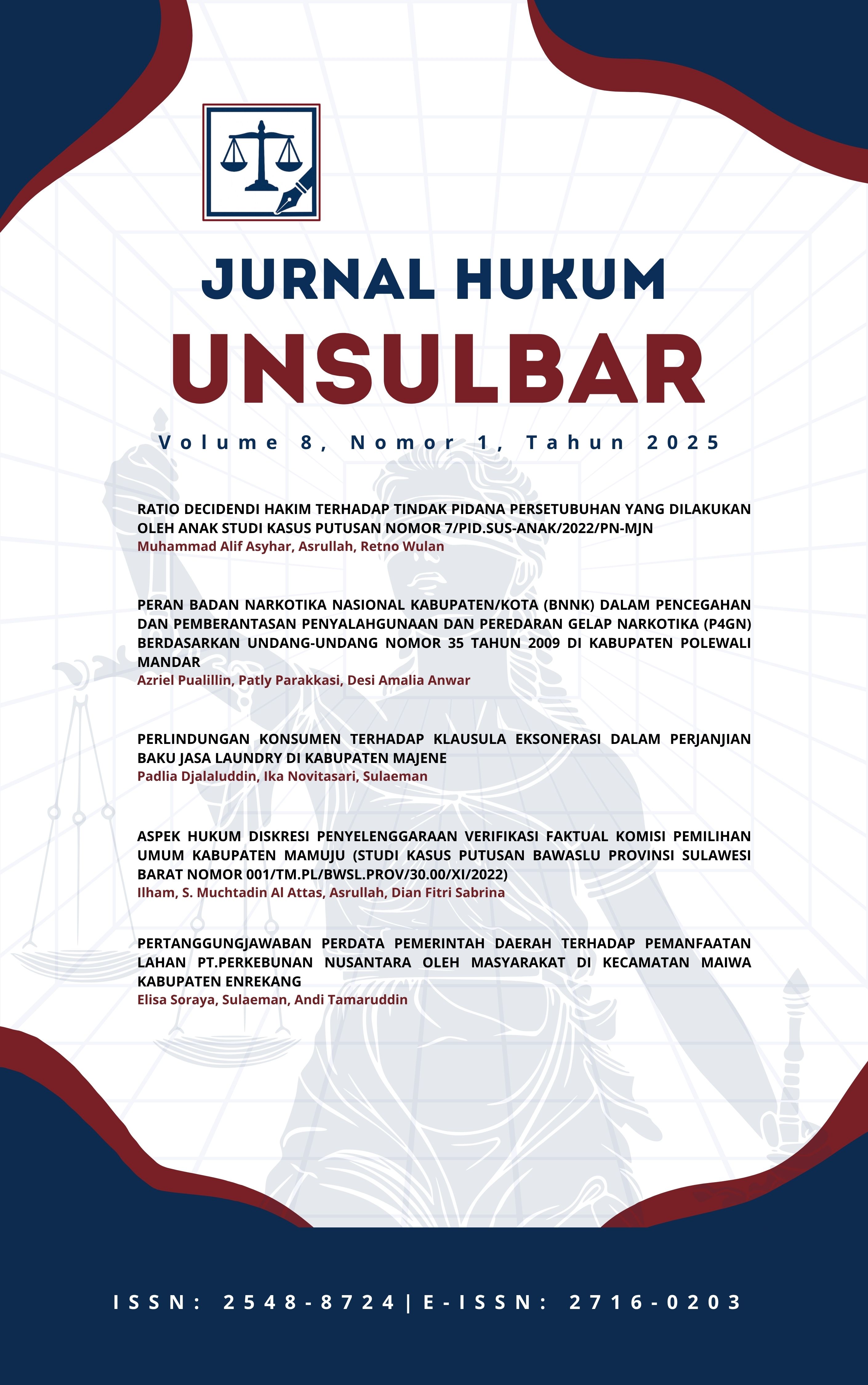RATIO DECIDENDI HAKIM TERHADAP TINDAK PIDANA PERSETUBUHAN YANG DILAKUKAN OLEH ANAK
Studi Kasus Putusan Nomor 7/Pid.Sus-Anak/2022/PN Mjn
Abstract
This study aims to find out how the judge's ratio decidendi to the crime of sexual intercourse committed by the child case study decision number 7/pid.sus-anak/2022/pn mjn, using an empirical normative research method with prescriptive analysis techniques. The results of the study show that the judge's ratio decidendi only focuses on the actions of the child whom he interprets to meet the persuasive element as the public prosecutor's subsidiary indictment without carefully considering the causal elements, the series of facts of events that should be able to benefit/mitigate the punishment of the child, and does not consider the principle of ultimum remedium at allas stated in Article 2 of Law Number 11 of 2012 concerning the Juvenile Criminal Justice System, which in essence must be considered by a panel of judges.
Keywords: Intercourse, Ratio Decidendi, Principle of Ultimum Remedium
Copyright (c) 2025 Universitas Sulawesi Barat All rights reserved

This work is licensed under a Creative Commons Attribution-ShareAlike 4.0 International License.
Penulis yang menerbitkan naskah mereka dalam Jurnal ini setuju dengan ketentuan berikut:
- Hak cipta di setiap artikel adalah milik Universitas Sulawesi Barat (Hak Cipta ©)
- Penulis mengakui bahwa jurnal ini memiliki hak untuk menerbitkan artikel dengan pemegang hak cipta ke Universitas Sulawesi Barat.
- Secara hukum dilarang untuk menyalin atau menggandakan sebagian atau seluruh isi artikel dalam jurnal ini dengan cara apa pun dan dalam bentuk apa pun dan dilarang mendistribusikan artikel baik secara elektronik atau dicetak tanpa izin tertulis dari Jurnal Hukum Unsulbar












